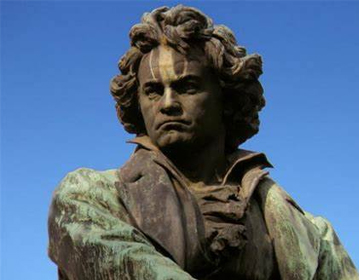Music Instrument: Piano
Programme: Sonata in C minor (‘Pathétique’), Op.13
Grave; Allegro di molto e con brio
Adagio cantabile
Rondo: Allegro
Composer: Ludwig van Beethoven
Piano Sonata No.8 in C minor, Op.13, work by Beethoven in 1798, was dedicated to his friend, Prince Karl von Lichnowsky. The title Grande Sonate Pathétique was added by the publisher, as he was impressed by the sonata’s tragic sonorities.
When Beethoven wrote the sonata, he found that his ears were becoming worse. However, despite the tragic introduction in the beginning, Beethoven also expressed hope through the sonata. The sonata consists of three movements, strictly following the sonata format of the classical period: Grave-Allegro, Adagio, and Rondo. And the through the three movements, the spirit changes from tragedy to hope.
The first movement is in a typical sonata form with an introduction and a coda. The introduction was very grave and tragic, and it appears before the development section and the coda, telling the listeners that a tragedy is coming. A plummeting chromatic scale at the end of the introduction leads us into the first theme of the exposition, which features a rocket-like upward staccatos. In the second theme, Beethoven made an unorthodox mode, presenting the theme in e flat minor. The second and the third themes are obviously milder than the first one, but the ‘Grave’ appears again to interrupt it, bringing a more turbulent development. The recapitulation is very similar to the development, but the third theme becomes darker. After the reappearance of the ‘Grave’, the movement ends with a strong coda.
The second movement is a very peaceful quartet-like Adagio. In this movement, we can sense some hope from the tragedy. The Adagio is also in a rondo form, and it leads us into the bigger rondo of the last movement.
The theme of the finale echoes with the second theme of the first movement, but the movement is much brighter than the first one. The flow of the finale was smooth, and more hope than misery can be found in the finale.
乐器:钢琴
曲目:c小调奏鸣曲(“悲怆”),Op.13
庄板,很快并充满活力的快板
如歌的柔板
回旋曲,快板
作曲者:路德维希·范·贝多芬
这首贝多芬的钢琴奏鸣曲创作于1798,是献给他的朋友von Lichnowsky亲王。 音乐的悲剧性深深打动了出版者,并且给这首作品添加了标题“悲怆”。
虽然这首奏鸣曲有一段悲剧性的引子,但总的来说音乐是充满希望的。整首奏鸣曲有3乐章:庄严-快板,柔板,回旋曲,而音乐则从悲剧的气氛逐渐化解为希望。
第一乐章是典型的带有引子/结尾片的奏鸣曲式。引子部分极其庄严,悲怆, 部分内容再次出现在展开/结尾部分,时刻提醒听者悲剧的降临。从天而降的半音阶把音乐带入了由如同火箭般的上行跳音组成的呈示部第一主题。第二主题中,贝多芬采用了降e小调,构成了一个不寻常转调。虽然,第二/三主题没有第一主题的疯狂,随后的“庄严”再次带来了一段急促的展开部。再现部分类似于呈示部,但其中的第三主题变得更加黑暗。随着“庄严”的再现,乐章以一段激烈的结尾片结束。
第二乐章如同一首弦乐四重奏,是一段安宁的柔板。音乐中我们可以感受到险恶过去后带来的一丝曙光。柔板采用了回旋曲式,同时带领我们到最后乐章:一段更大篇幅的回旋曲。
终乐章的主题和第一乐章第一主题产生了呼应,但总体来说却是充满光明的。终乐章如流水般流畅,赋予音乐更多的光明与正能量。

